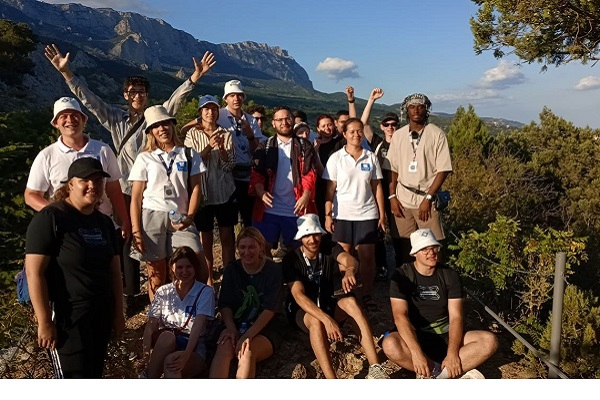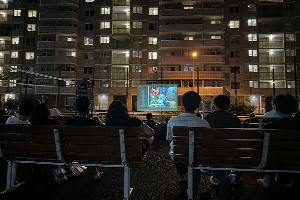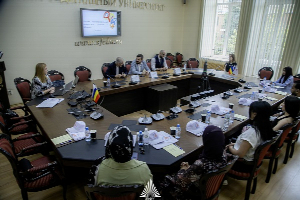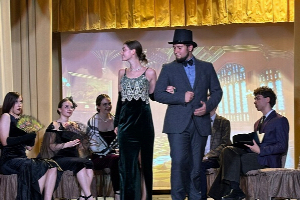
From August 12 to 18, Sevastopol State University organized the International Youth Interactive Expedition School "Crimean Circumnavigation 2024" on the territory of Sevastopol, Balaklava, the Republic of Crimea and the Krasnodar Territory.
The international youth interactive expedition school "Crimean Circumnavigation 2024" was held within the framework of the project "From the Varangians to the Greeks: a thousand-year history of the transit of ideas, people and technologies" with the grant support of the Ministry of Science and Higher Education of the Russian Federation. The work is carried out within the framework of the implementation of the federal project "Popularization of science and technology" of the state program of the Russian Federation "Scientific and Technological development of the Russian Federation".
The participants of the school were young scientists from Russia, Armenia, Lebanon, Nigeria and Kazakhstan. The students traveled about 700 kilometers along the Black Sea and the coast to explore the trade routes of the late Byzantine period. The participants included students of the Institute of History and International Relations of the Southern Federal University Anastasia Pervak, Irina Flustunova, Maria Grigorenko and Daniil Butrov.

The expedition began in the museum and temple complex "New Chersonesos", which was recently opened in Sevastopol. During the week, young scientists studied the monuments of linear trade routes and nodal infrastructure elements of the Eurasian sea and river communications of the V–XV centuries.
During the expedition, the participants were divided into two groups: marine and land. The first was to explore the seabed in Balaklava Bay and beyond. The researchers used modern domestic equipment, thanks to which they were able to take samples of water and the bottom surface at the site of the ancient port. The scientists delivered the samples to the Pioneer-M research vessel, where they analyzed the obtained material and studied it in detail.

The land part of the expedition consisted of three detachments that studied the port infrastructure and hydraulic structures, fortifications and fortresses, as well as the worldview of the peoples who inhabited the Crimea in ancient times.

The result of the work will be the publication of a historical and geographical description of the maritime communications of the northern Black Sea region of the V-XV centuries, compiled in the spirit and traditions of medieval manuscripts. Students will continue to work on the creation of a Portolan (an atlas of nautical charts indicating the geographical location of coasts and sea harbors) already at their universities.

Anastasia Pervak, a student at the Institute of History and International Relations of the Southern Federal University, shared that Natalia Nikolaeva, Associate Professor of the Department of National History of the Middle Ages and Modern Times of the Southern Federal University, offered her to take part in the expedition.

To participate in the expedition, it was necessary to write an essay on any topic related to the architecture of Byzantium, fortification, external relations, etc.
Anastasia chose the theme "Creation of sacred spaces of Byzantium and Russia".
"The research team I was in studied the mentality, temples, patron saints of seafarers. We visited temple complexes, ancient castles, archaeological sites, and museums. Teachers and guides told us a lot of interesting things. And we also had tasks for every day: to make a diary of the objects studied during the day and come up with a short story in a medieval style on behalf of a traveler. Of course, apart from the scientific part, we got to know each other. Most of all, I remember the New Chersonesos. This is an amazing complex of temples, museums, amphitheaters, various buildings in the neo-Byzantine style. I will definitely come there again!

And the second thing I can't help but say is the frescoes of Theophanes the Greek in the church of Dmitry Solunsky in Feodosia. Being a historian, many times I have to come across the mention of this master and his works, but, of course, a book or a screen cannot even come close to conveying all their splendor and greatness. Being in front of the frescoes of the legendary iconographer, it's like touching eternity!" — shared Anastasia Pervak.
Maria Grigorenko, a student of the Institute of History and International Relations of the Southern Federal University, was advised to take part in the project by her supervisor, Head of the Department of Archaeology and History of the Ancient World of the Southern Federal University Yevgeny Vdovchenkov.
"I was in a group exploring the port area, we walked along the water or climbed the mountains for a better view, got acquainted with historical sites. Next, we recorded brief information about the object according to the plan and did creative work on the topic "How a medieval sailor would describe this place." I especially remember the last day and the round table where we discussed our observations and personal impressions. It was very interesting to hear the opinion of the guys. Direct research of historical sites has become a valuable experience," Maria Grigorenko said.
Now students will have to prepare research papers.
Short link to this page sfedu.ru/news/75887




